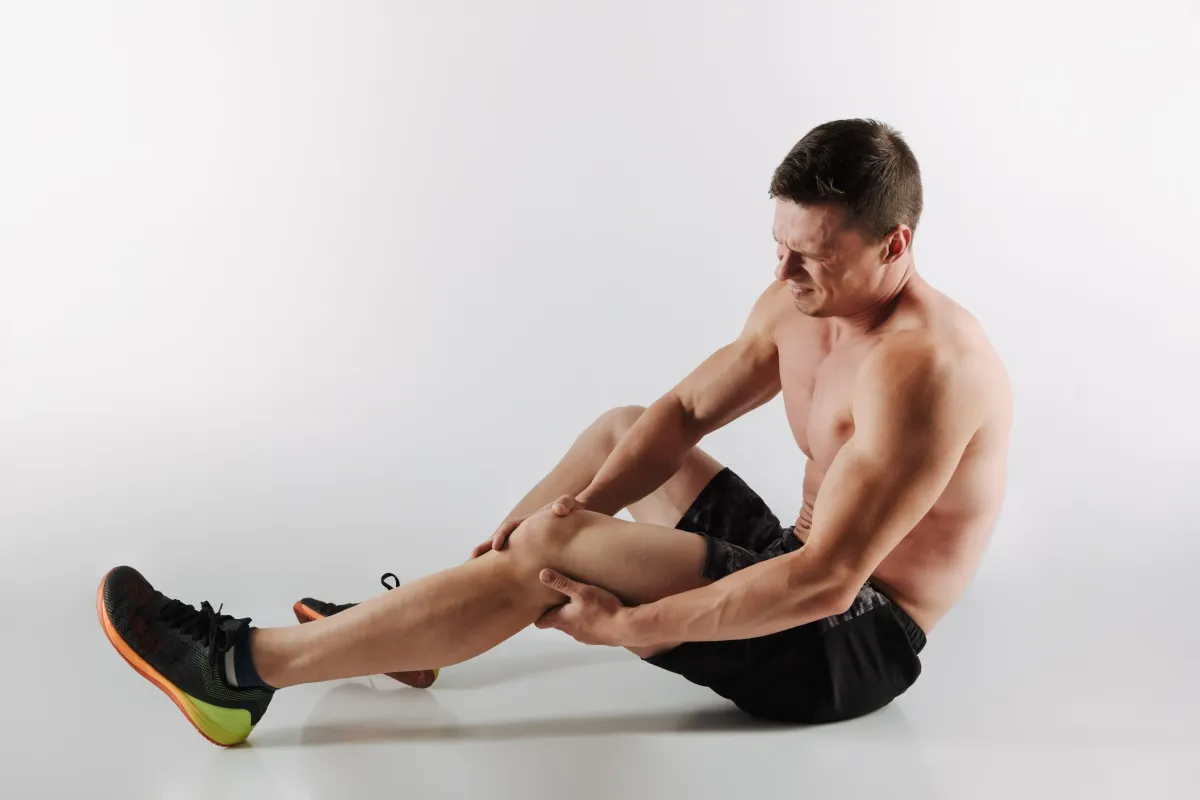Knee Cartilage Injury Treatment in NYC
Manhattan Physical Therapy

What is Knee Cartilage and How Does it Get Injured?
The knee is one of the most complex joints in the body, where your thighbone (femur), shinbone (tibia), and kneecap (patella) meet. Smooth movement and cushioning in the knee depend on two types of cartilage: articular cartilage and meniscus cartilage.
Articular cartilage covers the ends of the bones and the back of the kneecap, allowing them to glide smoothly against each other without friction. The menisci are two crescent-shaped pieces of cartilage between the thigh and shin bones that absorb shock, stabilize the joint, and distribute your body weight evenly.
Knee cartilage injuries can happen suddenly or gradually. Traumatic injuries often occur during sports or accidents — sudden twists, direct impacts, or awkward landings can tear cartilage. Over time, repetitive stress, overuse, or aging can wear down cartilage, leading to degeneration. Adolescents may also experience a condition called osteochondritis dissecans, where a small piece of cartilage becomes loose in the joint.
What Are the Symptoms of Cartilage Damage?
Cartilage injuries are not always immediately obvious, but certain signs should prompt evaluation by a specialist. The most common symptoms include:
Persistent knee pain, especially during activity
Swelling that comes and goes after exercise or long periods of standing
Catching, locking, or a “snapping” sensation when bending or straightening the knee
Stiffness or reduced range of motion
Instability or the feeling that the knee might “give out”
Increased pain when walking up or down stairs
How Are Knee Cartilage Injuries Diagnosed?
Diagnosing a cartilage injury begins with a detailed discussion of your symptoms and a physical examination. Your doctor will compare the injured knee to the healthy one, assessing swelling, stability, and range of motion. They may also perform movement tests to check for catching, locking, or pain with specific motions.
Imaging is often needed to confirm the extent of cartilage damage:
MRI provides a clear view of cartilage, ligaments, and meniscal tears.
X-rays or CT scans help rule out bone injuries and detect bone-on-bone cartilage loss.
In some cases, an arthroscopic procedure may be both diagnostic and therapeutic, allowing direct visualization and treatment of cartilage or meniscal tears. Early and accurate diagnosis helps determine the best course of treatment and can prevent further damage.
What Physical Therapy Treatments Are Available in NYC?
Physical therapy is the cornerstone of treatment for most knee cartilage injuries. The goal is to relieve pain, reduce swelling, restore range of motion, strengthen surrounding muscles, and improve joint stability to prevent further injury.
A typical program may include gentle stretching to maintain flexibility, progressive strengthening exercises for the quadriceps, hamstrings, and hip muscles, and balance or stability work to support the knee during daily activities or sports. Therapists may also use manual therapy techniques, therapeutic exercises, and modalities such as ice, heat, or electrical stimulation to reduce pain and inflammation.
Physical therapy is highly individualized. Your therapist will adjust exercises based on your specific injury, pain levels, and recovery progress. Patients are gradually guided back to normal activity, starting with low-impact exercises like swimming, cycling, or walking, and progressing to more challenging movements as the knee heals and strengthens.
What is the Typical Recovery Timeline with Physical Therapy?
Recovery from a knee cartilage injury through physical therapy varies depending on the severity of the injury, your age, and your overall health. Minor injuries often improve significantly within six to eight weeks with consistent therapy, careful activity management, and targeted exercises.
For more significant cartilage damage, recovery may take longer, sometimes three to six months, as the knee gradually regains strength, stability, and range of motion. Physical therapists closely monitor progress and adjust exercises to prevent overloading the joint while promoting healing.
During recovery, low-impact activities like swimming, cycling, or using an elliptical are often recommended before returning to high-impact sports. Listening to your body, avoiding sudden twisting motions, and gradually increasing activity levels are crucial steps to prevent reinjury. Regular therapy sessions combined with guided home exercises give the best chance for full recovery and long-term knee health.
Who Benefits Most from Physical Therapy?
Physical therapy is suitable for nearly anyone with a cartilage-related knee injury, from athletes to active adults and seniors. Individuals who are motivated to participate in regular therapy sessions and follow home exercise plans often see the best results.
Patients with mild to moderate cartilage tears, early degeneration, or instability are ideal candidates, as strengthening and stabilizing the knee can often prevent symptoms from worsening. Even those experiencing catching, locking, or swelling after a minor injury can benefit greatly from PT, improving their function and reducing pain without surgery.
Your therapist will assess your knee carefully, taking into account your activity level, lifestyle, and goals. This ensures that your treatment plan is tailored to your needs, whether you want to return to sports, maintain mobility for work, or simply enjoy everyday activities without discomfort.
How to Reduce Risk and Prevent Recurrence
Protecting your knees from further injury is an essential part of rehabilitation. Strengthening the muscles around the knee through targeted exercises provides better support and reduces stress on the cartilage. Maintaining overall fitness and conditioning helps your body absorb impact more effectively, whether during sports or daily activity.
Proper warm-ups and stretching before physical activity can prevent sudden twists, falls, or awkward landings. Focusing on safe movement patterns and improving your technique in sports or exercise helps minimize the risk of reinjury. Maintaining a healthy weight also reduces the load on your knees, which is especially important for those who are active or returning to high-impact activities.
Contact us today to schedule your evaluation with our physical therapy specialists and start your journey to a stronger, healthier knee.
What others are saying
Alexander Liu
"Everyone on the team at Manhattan Physical Therapy is super nice and caring. They were able to pretty quickly diagnose my knee and hip problems and immediately put me to work to reduce the pain.."
Henry Myerberg
"You're not just a patient when you come to the Manhattan Physical Therapy. You feel like family there. In particular, Erica with her colleagues John, Lidia and Joe not only fix and improve you physically, they make you feel welcomed and cared for.."
Hakyung Kim
"Everyone is so kind and helpful! my knee and hip pain have improved massively since starting Manhattan PT, highly recommend to anyone. special thanks to Bianca, Lidia, Joe, and John!"
Manhattan Physical Therapy
✆ Phone (appointments):
(212) 213-3480
Address: 385 5th Ave, Suite 503, New York, NY 10016

